Because of a lapse in government funding, the information on this website may not be up to date, transactions submitted via the website may not be processed, and the agency may not be able to respond to inquiries until appropriations are enacted.
The NIH Clinical Center (the research hospital of NIH) is open. For more details about its operating status, please visit cc.nih.gov.
Updates regarding government operating status and resumption of normal operations can be found at OPM.gov.
News & Updates
Endometriosis is one of the most common gynecologic diseases, affecting an estimated 5 million women in the United States. The condition occurs when tissue that normally lines the inside of the uterus grows outside the uterus. Pain and infertility are its primary symptoms.
Using sophisticated computer-based technology to analyze genetic data obtained from uterine tissue, researchers have identified patterns of genetic activity that can be used to diagnose endometriosis, an often-painful condition that occurs when tissue that normally lines the inside of the uterus grows outside the uterus. The prototype diagnostic method, developed with funding from the National Institutes of Health, can not only distinguish endometriosis from other disorders of the uterus, but can also identify the severity of the disease.
Throughout May, the NICHD highlighted important information about women’s health, particularly women’s health research. These efforts coincided in part with National Women’s Health Week, from May 11 to 17.
Lisa M. Halvorson, M.D., has been named the new Chief of the Gynecologic Health and Disease Branch (GHDB), effective June 15, 2014, announced Dr. Catherine Spong, M.D., Director of the Division of Extramural Research.
The NICHD spent the last month highlighting important information about infertility.
Conversation between Rebecca Lazeration and three NICHD researchers who are working to advance the field of reproduction science.
Check out our infographic to learn the facts, and share it to spread the word.
Endometriosis is a condition in which a type of tissue called the endometrium, which normally lines a woman’s uterus, grows elsewhere in her pelvic cavity. These growths of endometrial tissue are called “implants,” “nodules,” or “lesions” and may be found on a woman’s ovaries, fallopian tubes, bowel, bladder, or other locations.
With 11 research programs, more than 75 researchers, and more than 1,100 support staff, the NICHD's DIR is among the largest at the NIH. But with good reason—The NICHD's DIR also has one of the broadest research portfolios at the NIH, covering nearly all aspects of human development and reproduction.
Endometriosis is a disease in which tissue similar to the endometrium, which normally grows inside the uterus, grows outside the uterus instead. Although the exact number of women affected by endometriosis is not known, current estimates suggest that 176 million women worldwide may be affected by the condition.
On December 5, 2012, the NICHD released the Scientific Vision: The Next Decade, the culmination of a collaborative process that began in 2011 to identify the most promising scientific opportunities for the Institute and the research community to pursue over the next decade. The Vision statement was made available during the NICHD’s 50th anniversary colloquium.
Alan Guttmacher, M.D., Director of the Eunice Kennedy Shriver National Institute of Child Health and Human Development (NICHD) announced a number of changes to streamline the institute’s organizational structure and accelerate the exchange of scientific ideas.
A document charting a research course for the many collaborators who share an interest in promoting the science concerning human development through the life span, child health, women's health, and rehabilitation research is now available online.
As the Institute marks its golden anniversary, we look back on the NICHD's early years, its scientific accomplishments, and its future.
During their lifetimes, many women will face a wide array of health issues. Some will seek treatment for gynecological conditions, such as endometriosis and uterine cancer. Others will experience conditions that affect both males and females, but that follow a different course in women, such as heart disease. Women's health is also affected by factors like socioeconomic status and race/ethnicity, sometimes in ways that they cannot control directly.
In 2011, the NICHD-led Endometriosis: Natural History, Diagnosis, and Outcomes (ENDO) study found that 11 percent of a group of women with no symptoms of endometriosis actually had the disorder. If this finding is applied to all the women in the United States, the number of American women with endometriosis would well exceed previous estimates of 5 million.
The 2010 DIR Annual Report illustrates the impressive accomplishments that result when dozens of PIs, more than 350 trainees, and approximately 1,200 staff all work toward the same goal of improving human health.
Researchers funded by the National Institutes of Health have identified a key step in the establishment of a pregnancy. Their discovery shows how the hormone progesterone suppresses the growth of the uterus's lining so that a fertilized egg can implant in the uterus.
NICHD Director Alan E. Guttmacher, M.D., initiated the NICHD Director’s Lecture Series as a way to showcase cutting-edge science relevant to the Institute’s mission. The forum also enables staff and other attendees to interact with other nationally recognized scientists.
The Division’s research programs address topics ranging from molecular and cellular biology, genetics, and endocrine and genetic disorders, to physical biology, neurosciences, immunology, reproduction, and behavioral research. Its projects are organized around the theme of the orchestration of life by molecular messengers.









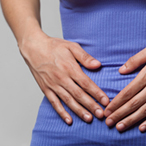
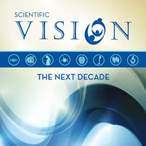
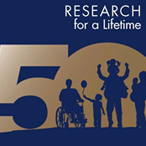

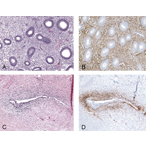

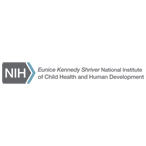
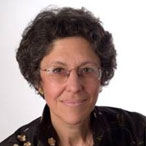
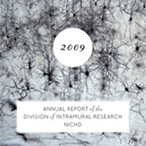
 BACK TO TOP
BACK TO TOP